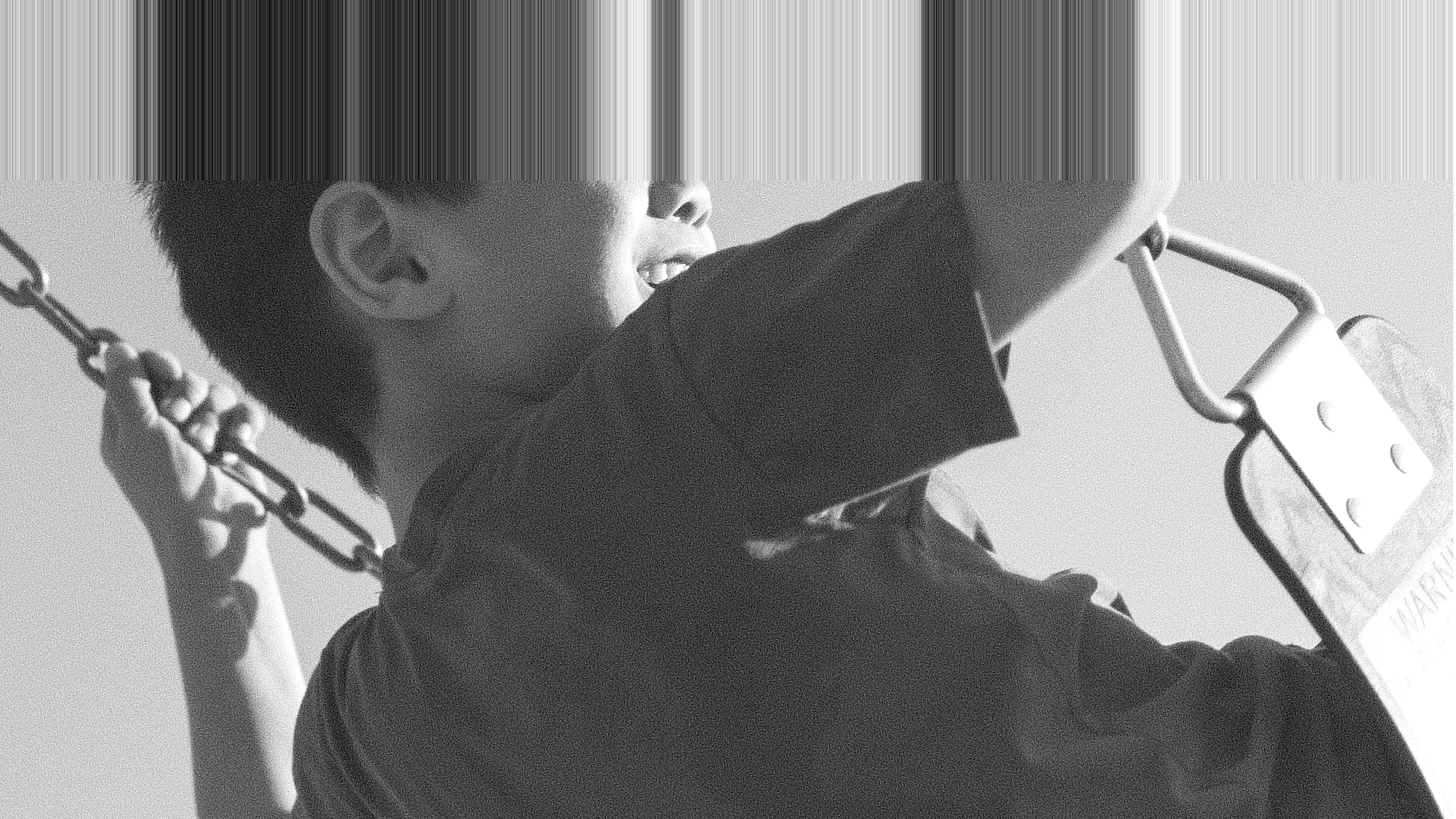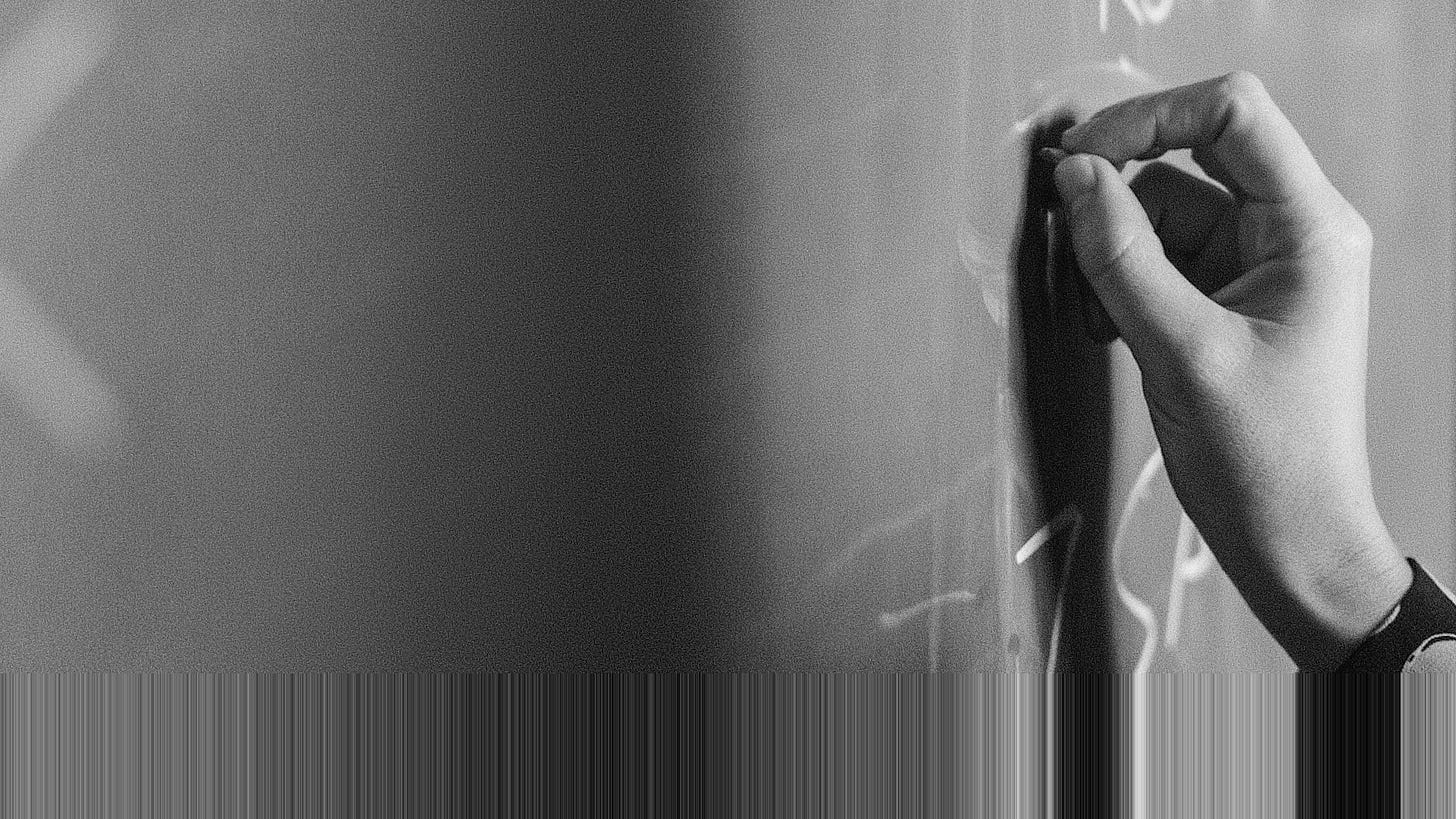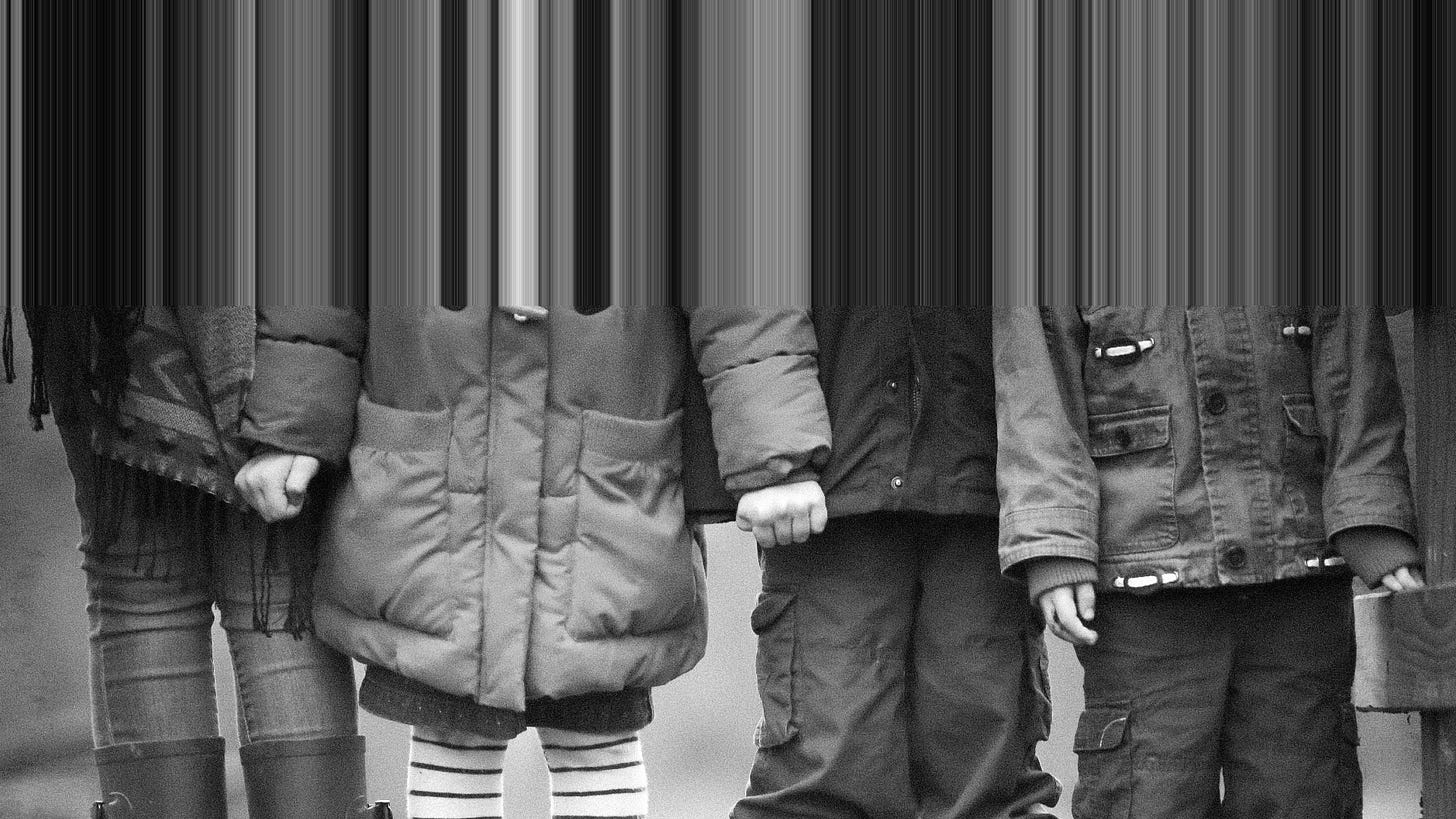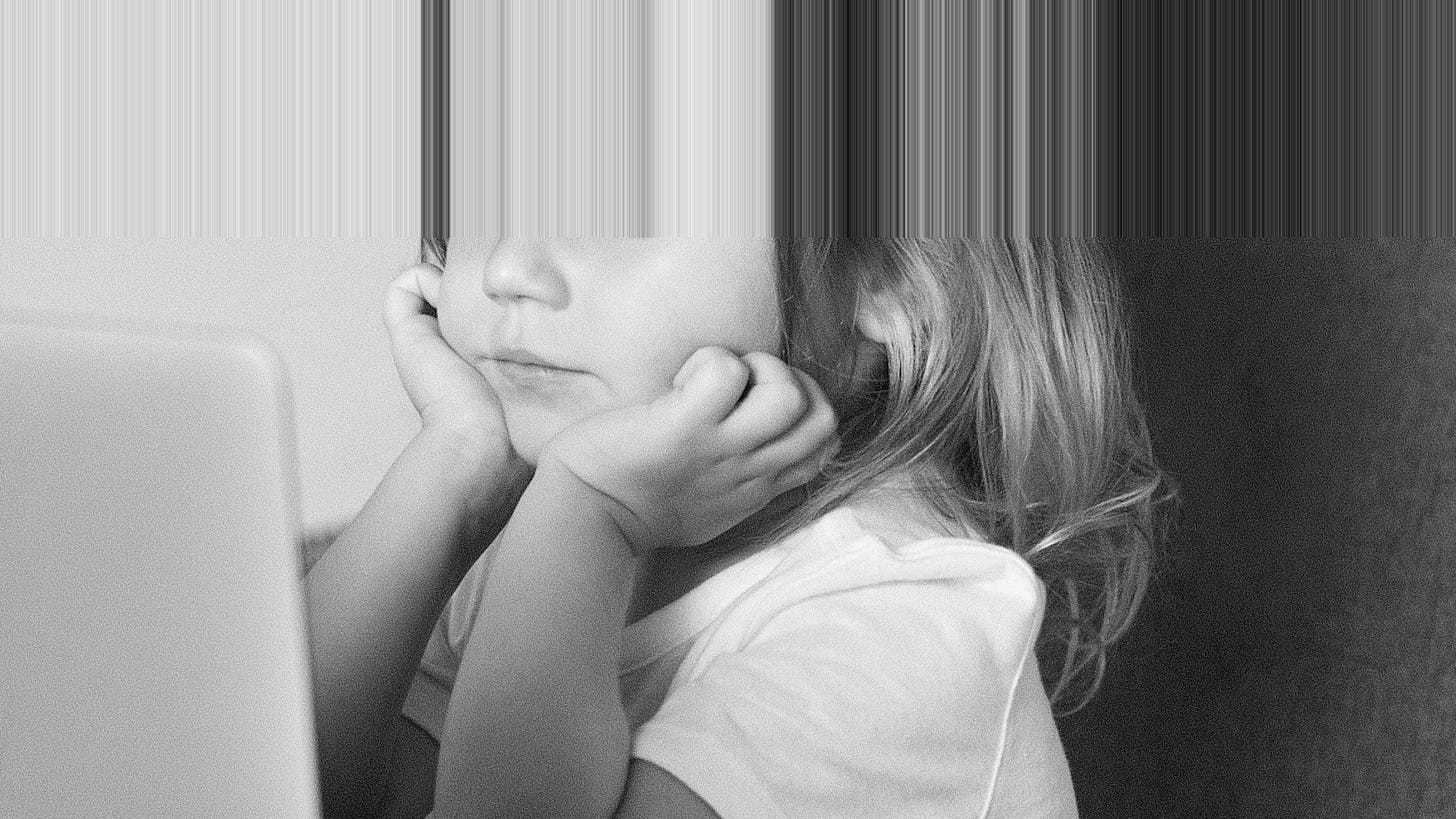Crickets.
It wasn’t always this case.
I just finished guest lecturing at a college and not a single student had a comment or question. Just stares.
Class dismissed.
Debriefing, the professor praised, “Great stuff!”
Sarcasm? She continued, but with hesitation, “...Since the pandemic... yeah, well... It’s been tough. Participation and attention has clearly... changed.” It wasn’t me.
Besides the pervasive laptops and phones which weren’t permitted in class five years earlier, she reported students couldn’t maintain eye contact and were incapable of navigating group projects.
The professor confessed, “I’m trying my best to meet them where they are.”
I inquired.
“It means we’re increasingly screening YouTube videos.”
The Grades
We were comfortable making the claims in 2020, but the data now makes the results undeniable: COVID-19 dramatically impacted students' learning and emotional development – across all ages.
The students’ timidity I experienced guest lecturing was at a highly ranked, small private college. These were the top percentile of students around the world. If the effects were this obvious here – and considering these students were already 18-years-old when COVID-19 hit – the ramifications of the pandemic are significantly more severe for younger students, both with less developed brains and in more resource-scarce environments.
Between now and 2033 (when kindergarteners who experienced COVID-19 are expected to graduate high school), we will bear witness to the grave and robust consequences of the pandemic’s impact on learning. iPad babies now face a tumultuous journey beyond K-12, and into secondary education and eventually the workplace.
The New York Times Editorial Board calls this learning loss the “most damaging disruption in the history of American education.”
While the U.S. federal government has handed out $190B in COVID-relief to schools, the largest single investment in American schooling history, future investment here must be holistic.
There are three distinct areas of this delay worth remedying: 1. academic education itself, 2. emotional and social maturity, and lastly, 3. toddler development. Each requires distinct, public and private support if we’re to ultimately address our other societal challenges.
01. Academic Loss
One-in-five K-12 students have more than half a year of pandemic-related learning delay.
After several years of normalizing missing class, roughly 30% of K-12 students are now considered “chronically absent,” missing >10% of the school year. Since the pandemic, for 8-12th graders specifically, chronic absenteeism is up +12 p.p. (percentage points).
Professionals are calling this delay and absenteeism “unfinished learning.”
Learning via screens, Zoom fatigue, glitchy internet, inaccessible teachers, lenient grading and accountability, constant schedule changes, reassigned teachers, and parental substitutes further corroded an already faulty educational system.
Surveying K-12 parents, six-in-ten believe that the first year of the pandemic had a negative effect on their children’s education. And of those who saw a negative effect, 44% believe it’s still lingering years later.
This is not just perception. Math and reading scores are the lowest in decades. Third graders have lost the equivalent of two decades worth of national education progress, while eighth-graders’ performance scores fell in 49 of 50 U.S. states. Meanwhile, the average college admissions ACT score in 2022 was the lowest average score in more than three decades.
Janet Godwin, CEO of the ACT shared,
“This is the fifth consecutive year of declines in average scores, a worrisome trend that began long before the disruption of the COVID-19 pandemic.
The magnitude of the declines this year is particularly alarming, as we see rapidly growing numbers of seniors leaving high school without meeting the college-readiness benchmark in any of the subjects we measure.”
Remember, these are just the results of our oldest, most developed students who experienced this pandemic...
While the pandemic alone had negative effects on education, it exacerbated and further widened an existing gap for disadvantaged students.
Sean Reardon, an education professor at Stanford, says,
“The poverty rate is very predictive of how much you lost,”
Those who had the least to lose, lost the most.
Our education crisis is an equity crisis.
There’s also another crisis. The national teacher shortage. New York state alone needs approximately 180K new teachers over the next decade to meet workforce needs. Without trained teachers or adequate tools, our education loss doesn’t stand a chance to catch up.
McKinsey reports,
“Unless steps are taken to address unfinished learning, today’s students may earn $49K to $61K less over their lifetime... The impact on the U.S. economy could amount to $128B to $188B every year as this cohort enters the workforce.”
With this math, we learn that learning loss isn’t just C’s in geometry, but ripples forecasted to crush economies.
What can we do?
Current solutions include increased tutoring (1-on-1 and in small groups), reduced class sizes, supplemental online education, summer programs, injecting education into summer camps, lengthening the school day or year, weekend classes, curriculum adjustments (i.e. combining subjects), increased parental involvement and addressing the sub-par position we put our teachers in.
A 13th school year is even being floated...
But these are all traditional solutions to a problem at an unprecedented scale.
Combating learning loss is a forcing function for educators to fundamentally rethink education. In addition to the $190B deployed for public and private schools, the private sector has invested another $15B. Private funding has significantly slowed since 2020, but this indicates that venture has identified and funded the best possible founders and innovation... It now comes down to adoption and integration. As we wait, the global EdTech sector’s market size is expected to grow from $123.4B in 2022 to $348.4B by 2030. Larger, the global E-Learning market is expected to grow from $194.2B in 2022 to $545.3B by 2030.
A win for students and markets requires coordination between teachers, technologists, policymakers, districts, and parents. It’s already happening.
St. Pascal Regional Catholic School in St. Paul, MN used data-driven “Individualized Learning Plans” (ILPs) unique to each students’ needs, demonstrating a remarkable recovery in math scores back to pre-pandemic levels. Several states and districts are finding that a combination of tailored instruction, professional support for educators, and extended learning time can significantly make up for learning loss.
Related, leveraging AI can also take the burden of lesson planning and preparation off of teachers, allowing them to spend more time with students. Prof Jim, a patented generative AI platform, has the ability to transform textbooks, training manuals, PDFs, emails, whitepapers, and any other text into classroom-ready slides, interactive videos, and personalized assessments narrated by high quality avatars in just minutes.
According to Dr. Deepak Sekar, Co-Founder & CEO of Proj Jim,
“One teacher spent 7 hours and 45 minutes creating a video lesson. Then, she tried to create the same lesson using our AI platform. The total creation time – including editing – only took her 30 minutes. And student learning outcomes were similar or better. With time, as AI gets more and more powerful, things will only get better.”
Meanwhile, progressive schools across the country are addressing the national teacher shortage by investing in remote instructors. Further, streaming platforms such as Subject are being dubbed the “Netflix for Education,” delivering over 120 high-quality accredited high school courses. The material is being translated into Spanish, while Subject partners with districts to augment classroom instruction, increasing engagement, accessibility and entertainment. Talk about “meeting the students where they are.”
Seemingly, the recovery required is not impossible.
If education is the foundation of our society, the pandemic widened the cracks in that very bedrock. But like all infrastructure, dismissing maintenance, cooperation and innovation puts us all at risk.
02. Emotional & Social Loss
Learning loss applies to more than curriculum.
Being able to navigate our mental health and social interactions is the prerequisite to overcoming our academic delays.
When surveying teachers, student mental health is a top, consistent concern.
According to Pew Research, 76% of parents now have some level of concern about their child’s anxiety and depression since the pandemic. Forty-percent are “extremely concerned.”
Today, parents are +43% more concerned about their kid’s mental health vs. drugs and alcohol, and +65% more concerned about their kid’s mental health than their risk of pregnancy.
How the tides have turned.
While parents are reporting an increase in anxiety and depression in their children, when asked about specific behaviors, social withdrawal, lethargy and irrational fears are all up since March 2020.
Most appalling, adolescent suicide has never been higher.
Today, more than 20% of teens have seriously considered suicide, including a third of teen girls. This growing number exacerbate the already shocking 132 suicides a day in America.
Take everyday adolescent struggles and layer on limited socialization, increased screen time with unfulfilling digital substitutes, and existential global crises. Then worsen all of that by ensuring those in need of support aren’t accessing it. Sixteen million U.S. students who need mental health support are not currently receiving it.
Stanford University researchers found teenage brains may actually be aging faster due to the stress from the pandemic. Scientifically, fear ages us. But this is not the maturity we're after. Historically, this type of “brain age” was only found in children who experienced violence, neglect and family dysfunction.
Predictably, we also find ourselves in a friend recession with reported isolation from kids up since the pandemic. How can children and young adults care for others when they’re unable to first care for themselves?
Dr. Jamie Cohen, a professor of media studies explains the connection between academic and social learning loss online,
“When remote learning took off, students were forced to navigate technologies and the internet without the prerequisite of digital literacy. Chromebooks have been distributed in classrooms for a decade, but YouTube has always been ‘banned.’ Students always found a way.
But since the pandemic, students have been exposed to online material and algorithms even more, but still without the adequate guidance. In an attempt to remedy academic performance, this has exacerbated mental health problems.”
Students can’t learn if they’re plagued by mental illness, emotional distress or social isolation. And laptops given out for learning purposes — but without proper guidance — can worsen that mental illness. This is a doom loop only aggravated by academic and adolescent pressures.
As Sarah Unger, a cultural researcher and Founder of CULTIQUE, as well as an expert in education design points out,
"The challenge with solving our fundamental challenges of childhood education is that they are just the tip of the iceberg.
What lies beneath the surface is ecosystemic: education meets healthcare meets environmental.”
Currently, we rely upon “borrowed infrastructure” to address our mental health needs: schools and teachers, doctor offices or emergency rooms. We require dedicated infrastructure.
Investments in more counselors and psychologists, campaigns for continued de-stigmatization, peer-to-peer programs, crisis hotlines, and parental education are all needed. We also require mental health curriculum (no different than mandatory reproductive health), which must span self-awareness to coping. Beyond that, we’re starved for nature, physical and extra-curricular activities, boredom, play, hobby empowerment, and increased socialization opportunities.
In the case of making up emotional and social loss, we’re forced to consider longer timelines. Anxiety isn’t solved in a semester. We should look farther out, considering higher education and the workforce as other settings for treatment. Young adults will make up over 30% of the world’s workforce by 2030 and 92% of workers find it “Very” (52%) or “Somewhat” (40%) important to work for an organization that provides mental health support.
According to Sarah Adler, PsyD, Founder of Wave, a mental health care platform offering science-backed, interactive and customized care with real coaches,
“As a Psychologist, I teach people to fully and authentically engage in the present moment. This leads to values-aligned choices that support their mental health. Maybe [the mental health of] Gen Z can be a reminder of what happens when we aren't engaged with life in a meaningful way.”
Our mental health crisis is more than a call for investment and resources – it's an indictment of how our society values its young, and how our young connect with the world.
Academic performance is moot if students are disenchanted or dead.
03. Developmental Loss
"Learning doesn't start on the first day of school but the first day of life," says Dana Suskind, author of Parent Nation.
It’s easier to depict academic learning loss or students’ decline in mental health, than it is to consider the pandemic’s effects on those who were just 1-5 years olds. However, early studies are finally beginning to paint a grim picture for their development.
During the 2020 school year, enrollment in Pre-K programs dropped for the first time in decades. This set off a chain reaction.
Typically, about 1-in-6 children experience a developmental delay. Now, new research reveals that those born during the pandemic have nearly twice the risk of delays in communication and social development.
During your first three years after birth, over 1M neural connections are formed a second, building the foundation of the brain. Eighty-five percent of a brain’s development occurs before five.
But children born during the pandemic are scoring lower on tests of gross motor, fine motor, social and problem-solving skills compared to those born before COVID-19.
A 6-month-old “pandemic baby” is now less likely to get into a crawl position, a significant milestone for those in this age group.
They’re also less vocal.
Fewer interactions with other children, caregiver stress, masks obstructing mouth movement and facial expressions, and increased screen time are all contributors here.
As a result, speech therapists and doctors are struggling to meet the increased need for evaluation and treatment. Eighty percent of speech-language pathologists are seeing more children with delayed language or diagnosed language disorders than before the pandemic.
And because of pandemic lockdowns and closures, treatment for both existing and emergent delays were pushed out farther.
And as a result of this, one study found that teachers reported an increase in biting and hitting in their classrooms. It’s hard not to see the parallel to the simultaneous increase in adults’ public freakouts.
More perplexing, a study exposed minor development delays in children whose mothers had COVID-19 while pregnant. It’s not believed that the virus itself affected babies in utero, but it was the stress and taxed immune systems of those mothers.
Rather than waiting to watch these consequences further unfold, we should be proactively scaling out early identification and intervention services – in and out of schools. We also require tailored early childhood programs and investment in countless therapies: physical, speech-language, play, music, cognitive and sensory. Expanding children’s’ speech by being an active conversation partner and sharing books has never been more important. We can also look to environmental modifications, assistive technologies, new routines, patience and continuous monitoring.
The patterns emerging from these early studies are a stark forecast of a generation at risk.
The children we speak of are not bar charts, but our eventual leaders, innovators, and guardians.
Looking Forward
By the time I finish my debrief with the professor whose class I taught, the room is nearly cleared out. There’s a straggler. As I finish packing up my bag, I’m approached.
For the next ten minutes I learn extensively about this student’s inter-collegiate startup’s vision and hurdles, and then eagerly answer their countless growth and marketing related questions.
The kids are going to be okay.
It’s not that something is wrong with our students, but that there’s something wrong with our education.
Without radical intervention, we designate a disadvantaged generation at the helm of navigating our most existential challenges.
However, the alternative is a generation of resilience – perhaps the most essential skill to face what’s coming.
History teaches us that crises are birthplaces for reformation. What if this very challenge we face catalyzes a revolution in how we approach modern education and personal growth?
The opportunity isn’t to make up for lost learning, but reinvent our society's core pillars: education, mental health and personal development.
We can choose to mourn what's lost or envision what can be.
This report was written in collaboration with Hannah Grey VC, a thesis led venture capital firm, where I reside as their Resident Futurist. Prof Jim, Subject, and Wave are companies within the Hannah Grey portfolio and its founders provided expertise for this piece.
This report is a part of a series of analyses forecasting future markets. Other collaborations studied the cultural implications of Ozempic and other longevity drugs and spatial computing.











